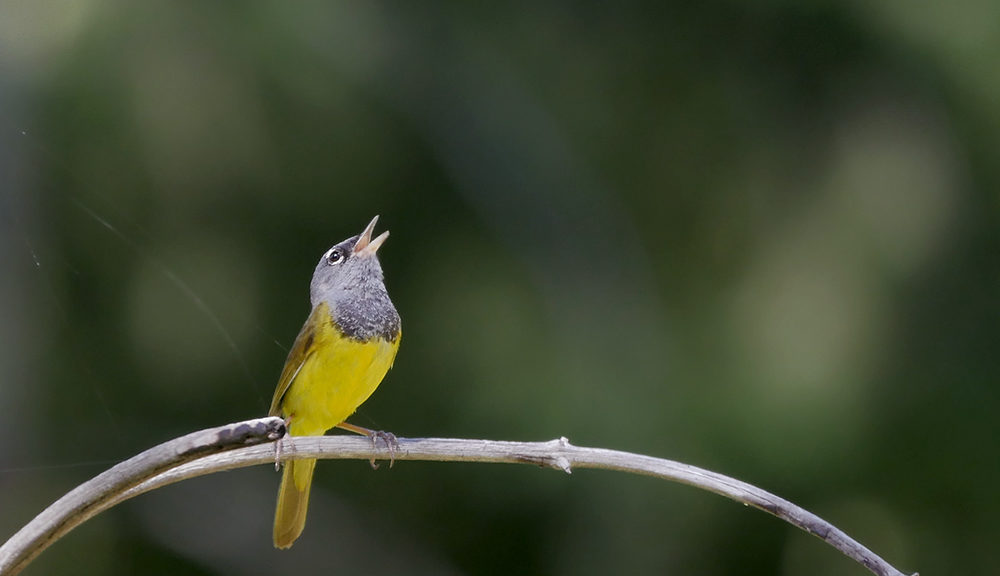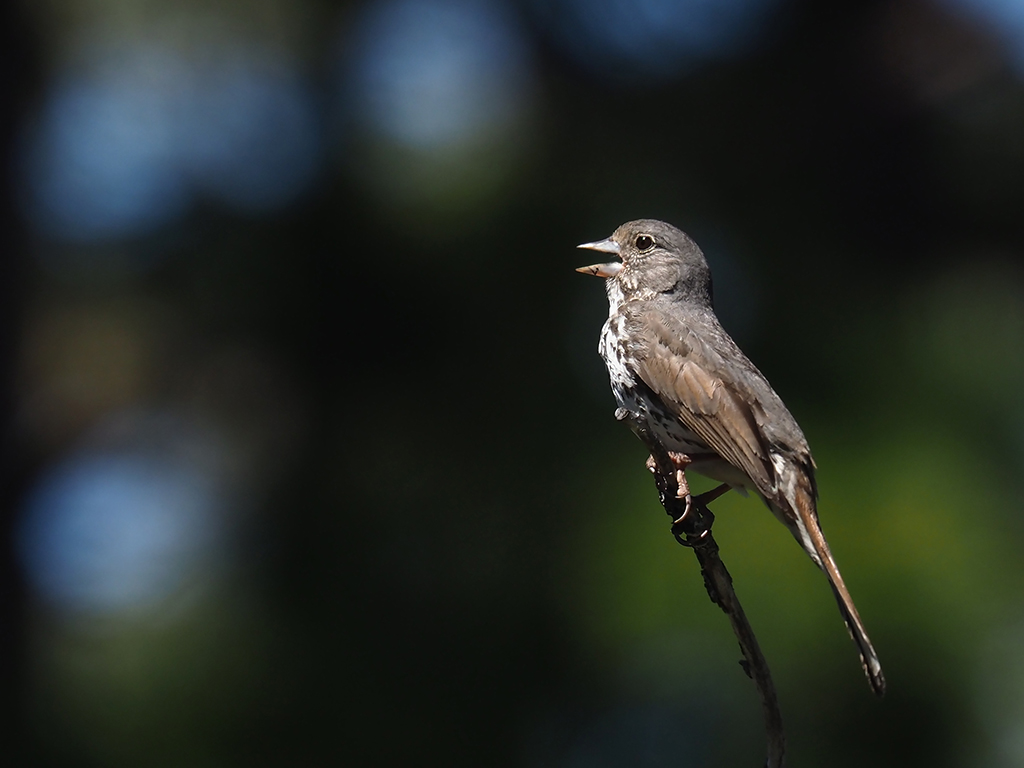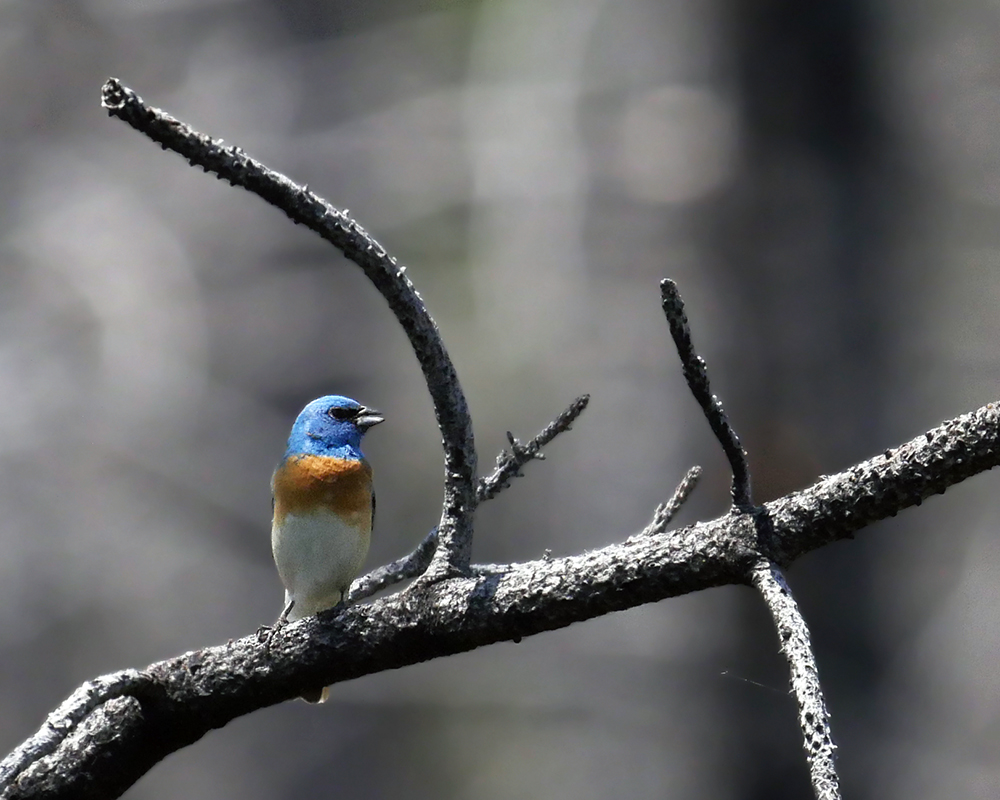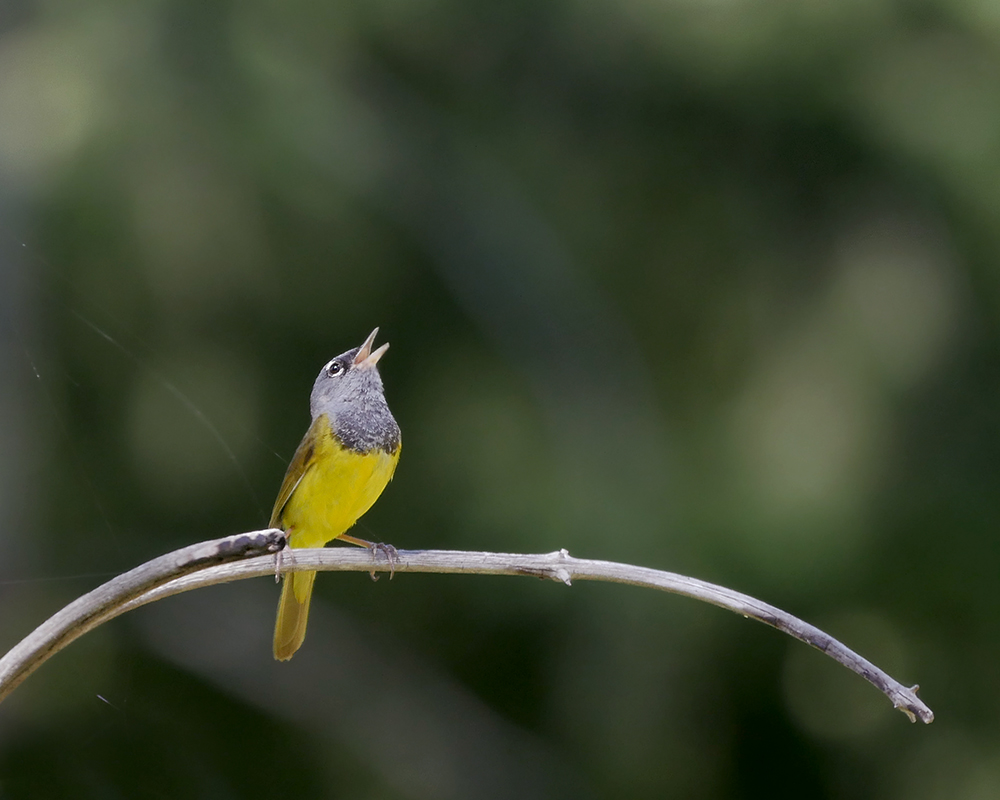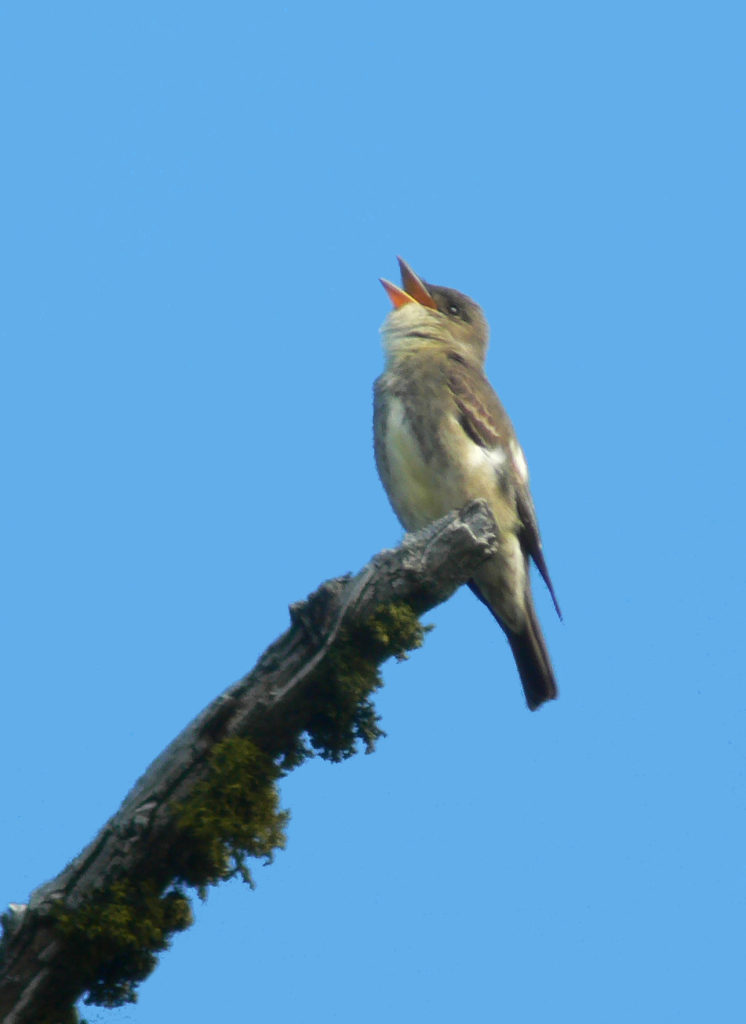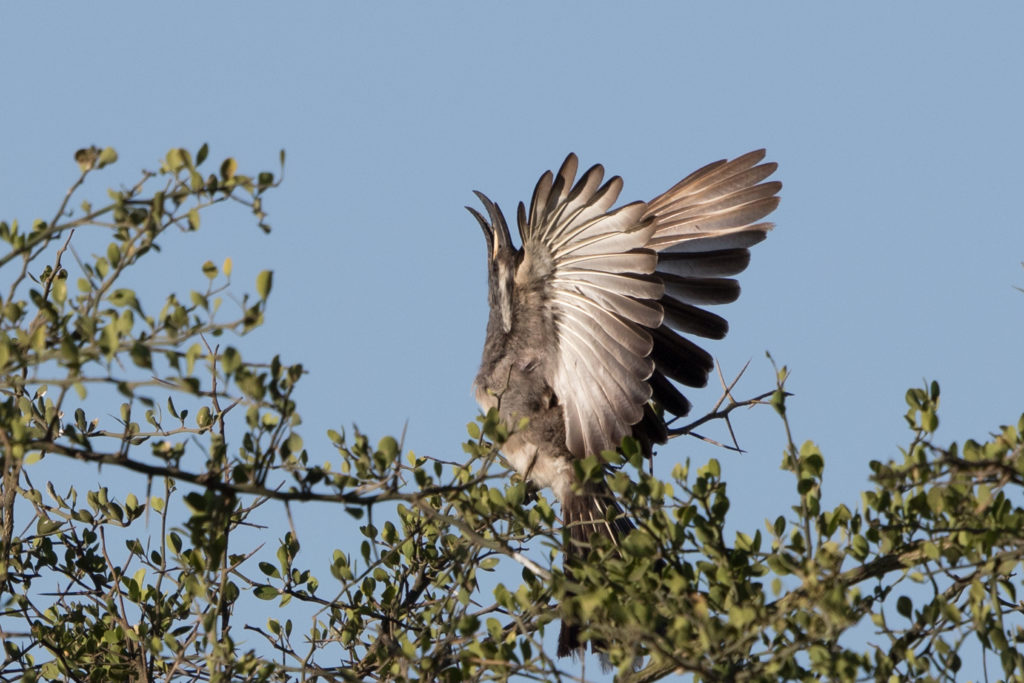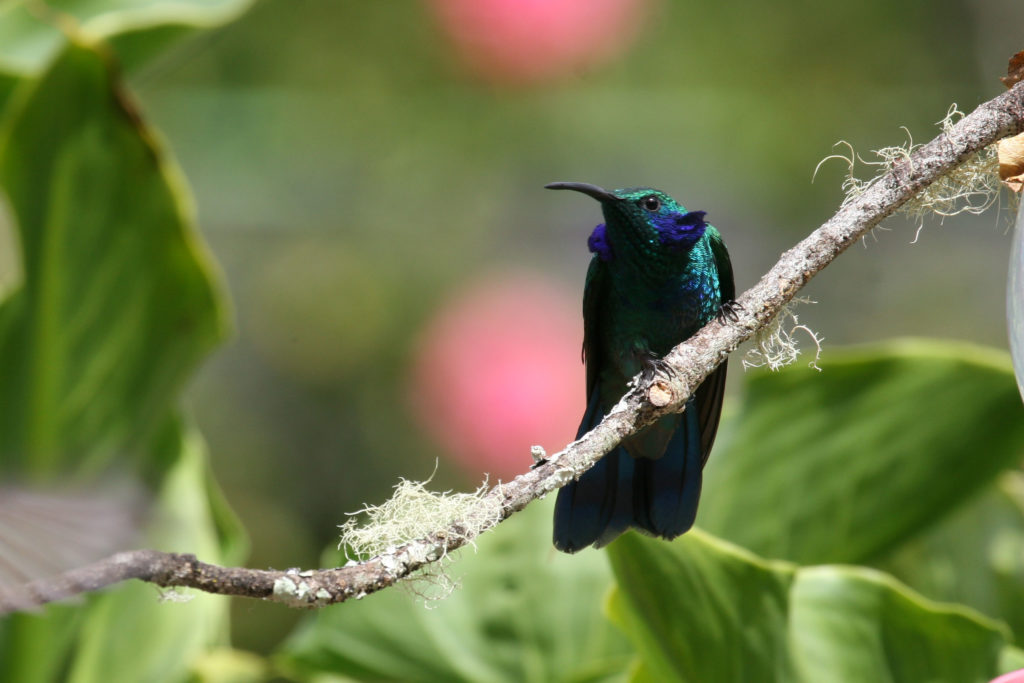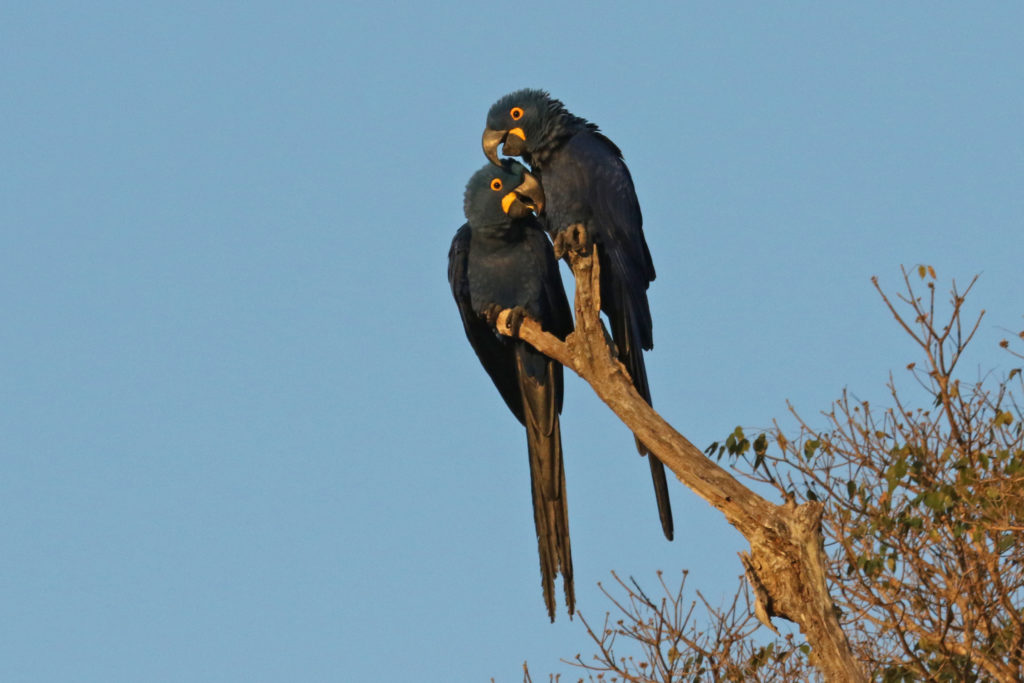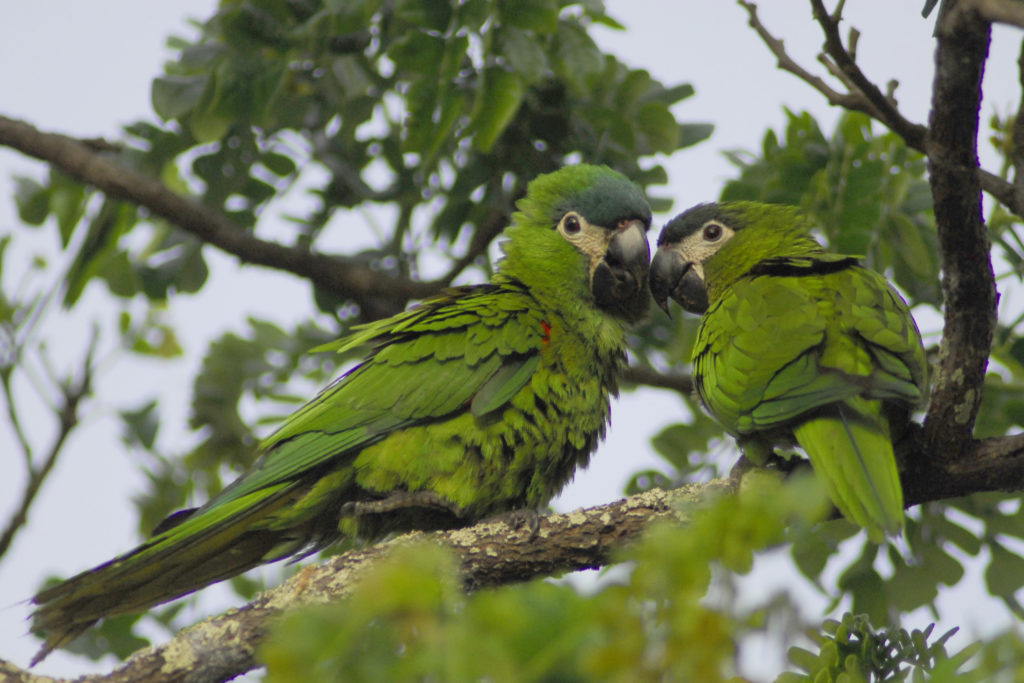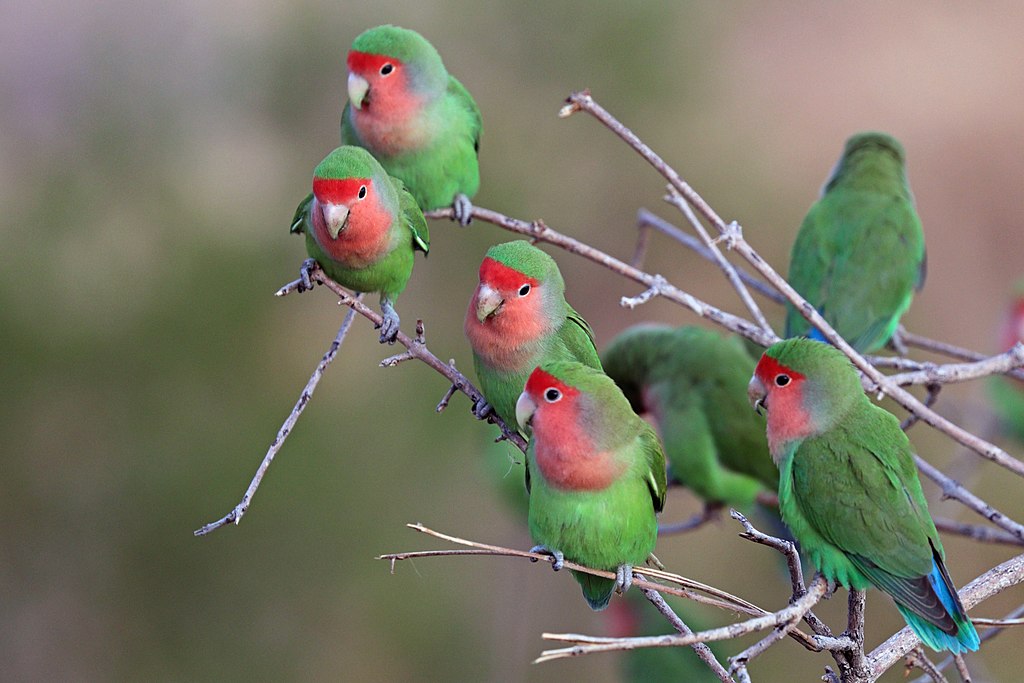An earnest warbling from a barely-budded tree and dry grasses passed between bills are two of the most common bird courtship and mating rituals to herald spring.
Springtime is now in the Northern Hemisphere, and migratory flyways around the globe are already bumper-to-bumper with birds making their way to breeding grounds. There, alongside local residents, they will deploy a staggering array of courtship strategies to help them snag a mate.
North American Flyways
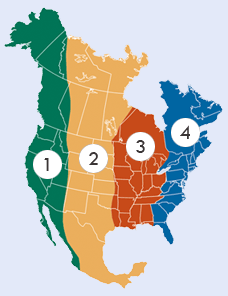
- Pacific
- Central
- Mississippi
- Atlantic
Photo Credit: USGS
Bird Courtship Strategies
Some birds are practical, offering berries, insects or seeds to a potential partner as evidence they can support a family. Others build a speculative nest — sometimes quite an elaborate one — to proffer to their partner a turnkey home. Other birds are far more focused on the flash, growing out elaborate plumage, singing, dancing, and launching elaborate aerial acrobatics.
Six Categories of Bird Mating Rituals
Scientists have identified six principal categories of bird courtship and mating rituals: singing, dancing, displays, building, feeding and allopreening, or mutual grooming. In this blog we will look at each bird courtship category and give examples, using birds we see on our tours. Starting with the most obvious and simple, many birds sing or call to attract a mate:
Singing as a Mating Ritual
One of the first things we notice as the quiet of winter gives way to spring is birdsong, which often serves the double duty of staking a territorial claim and advertising to a mate. Many warblers, including the Black-throated Green Warbler, demonstrate different songs for different audiences, one they sing when males are on their territory and another when they are single and notice females are nearby. Hear the different songs here on All About Birds.
Birdsong is often thought of as “a guy thing,” associated in popular culture with males crooning and females swooning. But female songbirds are getting a new look — and listen. Scientists at the Female Birdsong Project are enlisting birder citizen-scientists to help them document female singers. Female song was once thought unique to tropical species, where pairs often co-defend territory year round. But many temperate species females, as it turns out, may have been singing all along and had their songs ascribed to males, as Audubon notes in “Female Cerulean Warblers Chirp Away at Birdsong Stereotypes.”
Our two Oregon tours are a great place to see and hear warblers and other birds, since more than 275 species nest there, according to the state’s most recent breeding bird atlas.
Naturalist Journeys’ Upcoming Oregon Tours
- Oregon’s Cascade Mountains Great Birds & Lodges July 6 – 15
- Oregon’s Wallowa Mountains July 18 – 25
Both of these Oregon tours are guided by Steve Shunk, our Northwest US bird (and woodpecker!) expert. Steve took all of the songbird photos in the gallery above.
Dancing as Bird Courtship
Not all songbirds sing (nor are all singing birds songbirds). Ravens, for example, and Cedar Waxwings make vocalizations and are physiologically capable of song. But like your shy friend at karaoke, they just don’t sing. Scientists theorize that the Cedar Waxwing once had a song, but lost it because it was no longer necessary. A sociable rather than territorial bird, Cedar Waxwings often travel as a group in search of berry-laden trees. That means males have no reason to ‘sing out loud, sing out strong’ to attract a mate. Instead they initiate a hopping treetop dance with a female of their in-group, often proffering a love token — a berry or an insect, for example — that the two will pass between them in a bonding exercise. When she responds to his offering in turn, he knows he’s onto something.
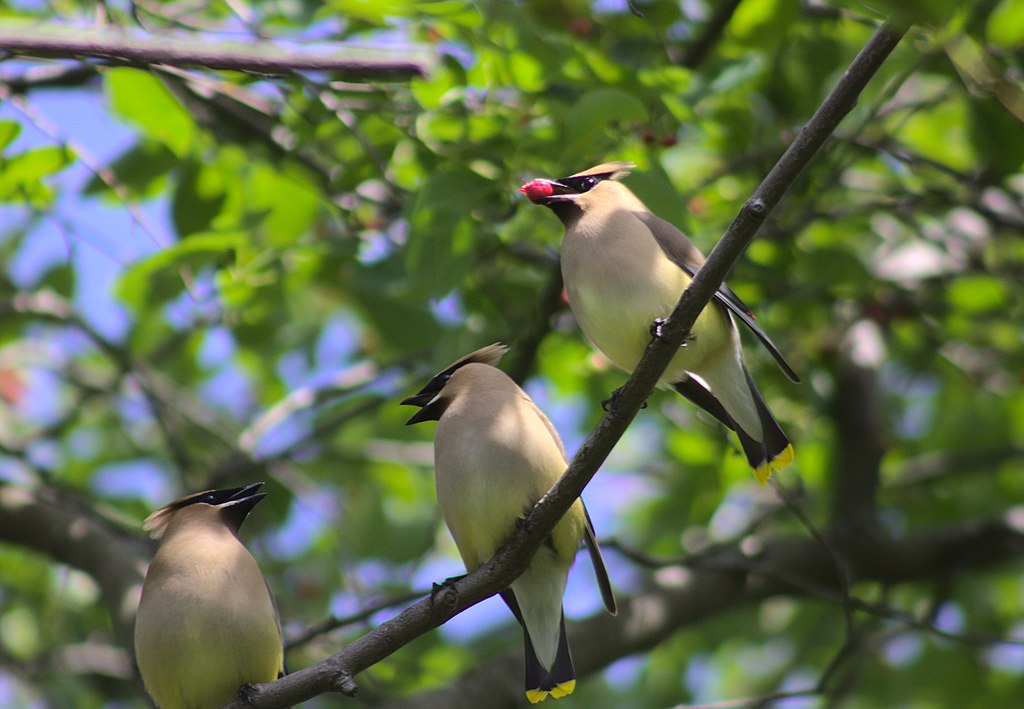
There are many birds who court by dancing, including the spectacular two-stepping of the Western Grebe, which may be seen (though they are unlikely to be courting then) on our Oregon tours. Western Grebes may also be seen on a new tour this year: Washington Coastal Birding and Nature with guide Steve Shunk August 18-25.
Displays
When the dancing is more or less one-sided, with the female sitting in wallflower judgement, it is considered a display. For example, watch these Blue-backed Manakin, which we have chances to see on our Trinidad and Tobago and our Guyana tours, dance in a wild, all-male conga line to try and win the girl:
Prairie chickens and grouse also compete for a mate via dance-off, gathering early on spring mornings on nature’s dance floor, a ‘lek’ that they return to year after year. Prairie grouse mating rituals also include whooping, drumming their feet, and booming sounds made through the inflation of air sacs in their chests or neck. Meanwhile, drab female hens sit and take it all in, until one of the dancers impresses her enough to take for a mate.
Perhaps unsurprisingly, the showiest birds are often the ‘players’ of the avian world; those least likely to stick around and help raise their young, according to Cornell’s All About Birds. Birds of Paradise, the many spectacular species we see on our Papua New Guinea tours and peacocks are all guilty as charged. Peahens often form a mutual aid society after their mates strut away to hypnotize other females, cooperatively raising their peachick young.
Not all displays are so elaborate. Some may simply involve breeding plumage, or the striking of a pose.
Allopreening
For the birds whose love language is touch, allopreening, or the preening of other birds, is how they establish and maintain bonds. The obvious example here is lovebirds! Rosy-faced Lovebirds, which we see on our Namibia tours, were named for this canoodling behavior. Birds preen themselves to keep their feathers in flying form and to remove mites and debris. They preen one another as pair bonding, and among highly territorial species, to remind one other they are friend not foe. Macaws and parrots may be found gently nibbling their mates’ heads and bills on our South American, Central American, and South Texas tours.
Building Bird Courtship
“If she doesn’t find you handsome, she should at least find you handy,” the old saying goes. And many birds build speculative nests — sometimes several nests — and try to lure in the ladies with turnkey real estate. Cape Weavers, which we often see on our South Africa tours, are among the most impressive of all builders, though Sociable Weavers build apartment complexes with multiple rooms for each couple, insulated interior rooms for cool nights and exterior ones for hot days.
Bowerbirds, also of Papua New Guinea and Australia, build elaborate nests on the ground and strew them with flowers and food and other love tokens to help lure a mate.

Food Offerings
Who doesn’t like a nice meal they didn’t have to forage themselves? Among the most pragmatic of love tokens, food is mate-bait for many species. Some birds drop the food near the female as if they were delivery drivers dropping off pizza. Others place the food directly into the female’s bill, showing that they know what to do once the chicks are hatched.
eBird Breeding Codes
Witnessing bird courtship and mating rituals is fascinating, whether you are on a migration birding and nature tour, or just doing some backyard birding. But did you know that eBird has a special set of codes for noting this avian courtship and the resulting nests and young?
They are:
- NY Nest with Young (Confirmed) — Nest with young seen or heard.
- NE Nest with Eggs (Confirmed) — Nest with eggs.
- FS Carrying Fecal Sac (Confirmed) — Adult carrying fecal sac.
- FY Feeding Young (Confirmed) — Adult feeding young that have left the nest, but are not yet flying and independent (for some projects should not be used with raptors, terns, and other species that may move many miles from the nest site; often supersedes FL).
- CF Carrying Food (Confirmed) — Adult carrying food for young (for some projects should not be used for corvids, raptors, terns, and certain other species that regularly carry food for courtship or other purposes).
- FL Recently Fledged Young (Confirmed) — Recently fledged or downy young observed while still dependent upon adults.
- ON Occupied Nest (Confirmed) — Occupied nest presumed by parent entering and remaining, exchanging incubation duties, etc.
- UN Used Nest (enter 0 if no birds seen) (Confirmed) — Nest is present, but not active. Use only if you are certain of the species that built the nest.
- DD Distraction Display (Confirmed) — Distraction display, including feigning injury.
- NB Nest Building (Confirmed/Probable) — Nest building at apparent nest site (should not be used for certain wrens, and other species that build dummy nests; see code “B” below for these species).
- CN Carrying Nesting Material (Confirmed/Probable) — Adult carrying nesting material; nest site not
For more information about how to use the codes, here is a link. Happy birding!

